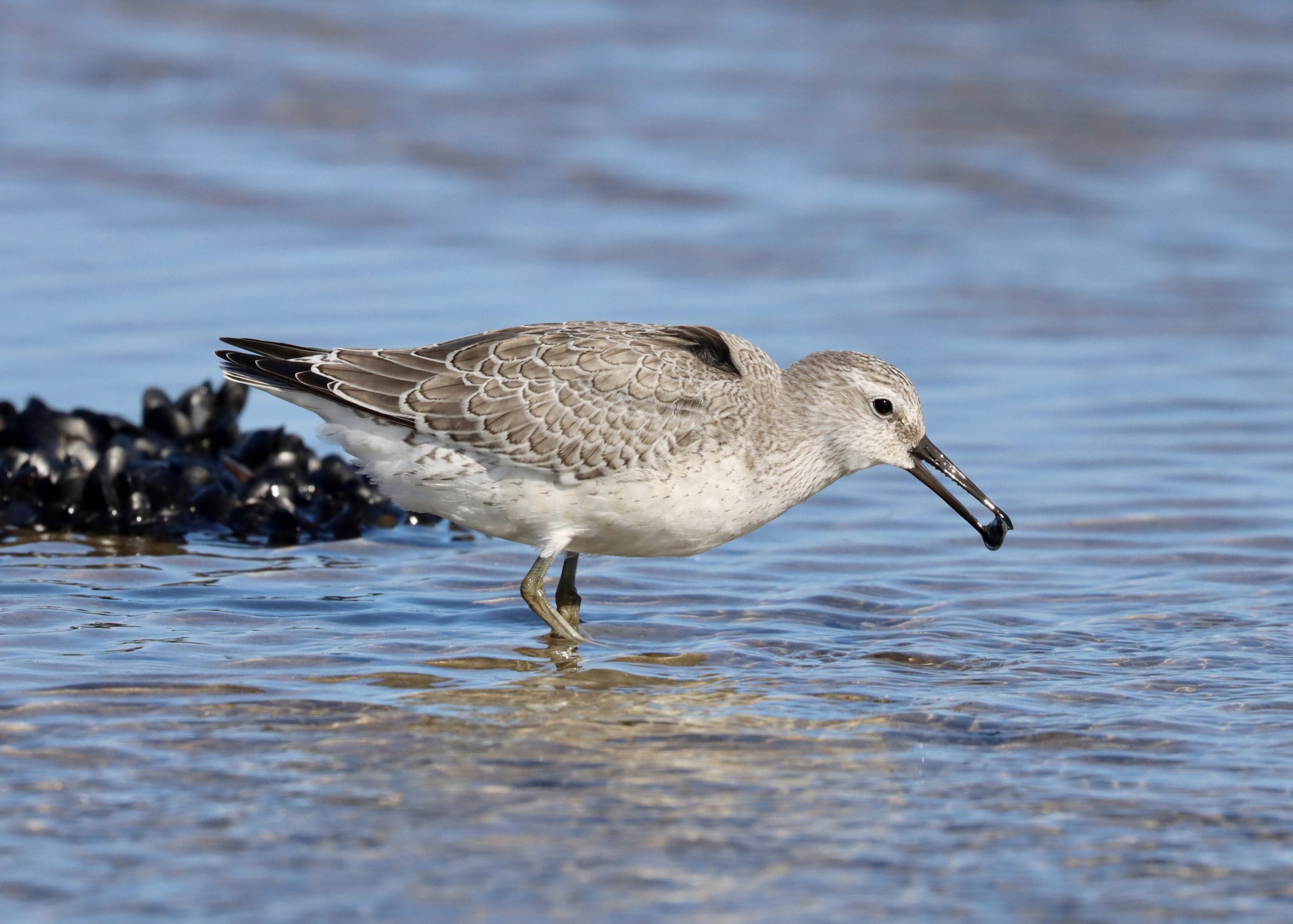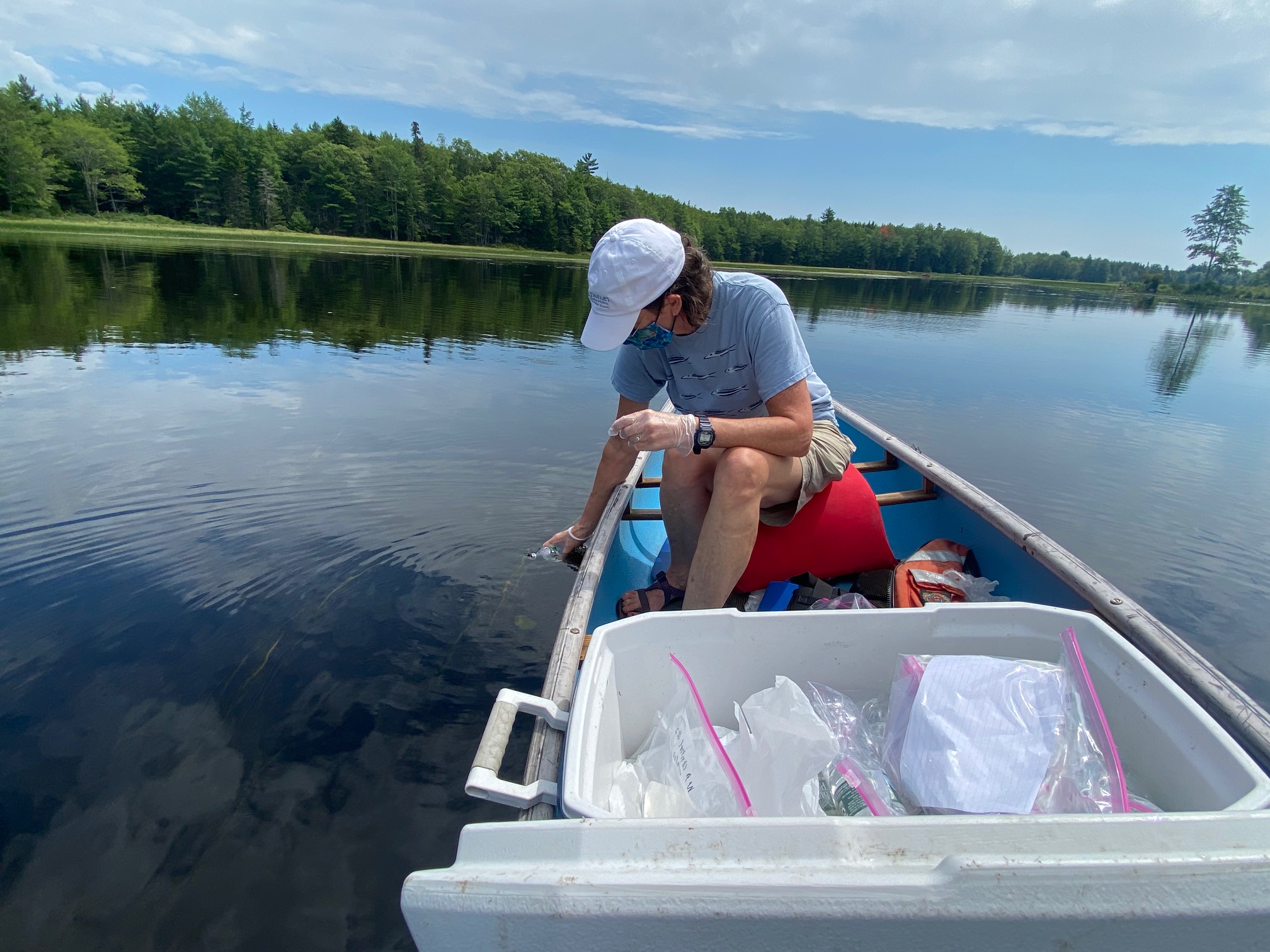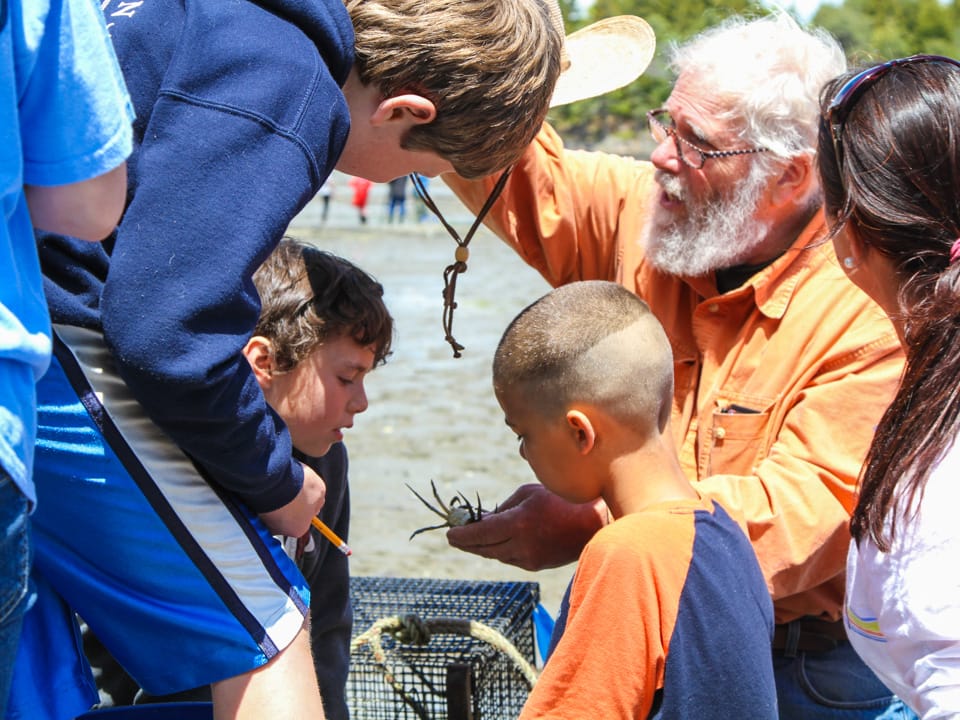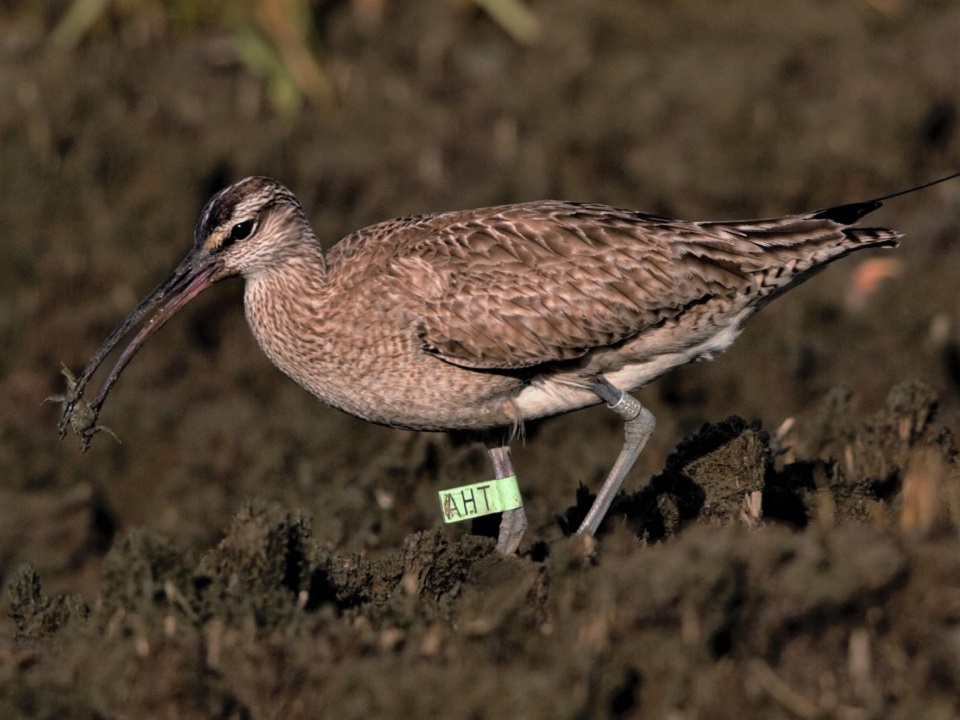By Kat J. McAlpine
A team of New England scientists, supported by a U.S. Fish and Wildlife Service grant (USFWS), are embarking on new research to discover which prey species–such as worms and shellfish–are sustaining a threatened and fast-declining population of shorebird: the Red Knot found along the western Atlantic, Calidris canutus rufa, sometimes simply called “rufa” for short.
What might normally require strenuous efforts to collect buckets of mud, sand, and silt from Red Knot feeding sites on Cape Cod will now only require small test tubes of environmental material. Genetic sequencing technology will do most of the heavy lifting through an analysis of environmental DNA (eDNA), a technique that pinpoints the genetic signatures of organisms within a field sample.
“We’ve observed the Red Knot’s estimated population numbers rapidly decreasing over their last three generations. To rise to the challenge of conserving this species, DNA sequencing technology will help us study their habitat and food sources faster than before,” says shorebird biologist Stephen Brown, the vice president of science at Manomet, Inc. “For us to turn things around for Red Knots, we must use the best available technologies to answer pressing questions about environmental changes facing this bird.”
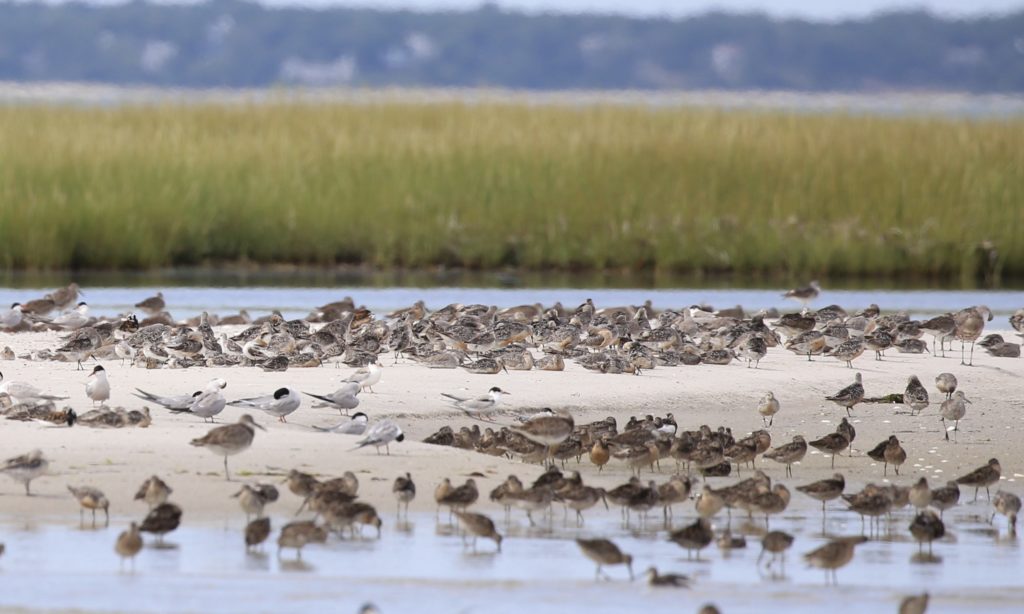
With the support of a two-year, $150,000 grant from the USFWS’ Recovery Challenge (a funding opportunity that supports high-priority conservation of endangered or threatened species), scientists from Manomet and the University of Maine will work together to discover the genetic makeup of organic matter inside mud and other environmental samples from sites across Cape Cod, including Monomoy National Wildlife Refuge off the coast of Chatham, Massachusetts.
The insights the team gains will be used to guide conservation efforts and habitat management practices on Cape Cod and make mitigation plans for shifts in landscape and biodiversity as a result of climate change.
A coastline of global importance
The team’s research–led by Alan Kneidel and Marissa McMahan of Manomet and Erin Grey of UMaine–is expected to kick off in May 2022 and last until November 2023, with fieldwork concentrated over the spring, summer, and fall months. It’s during those seasons that Red Knots make an 18,000-mile round trip from the tip of South America to nesting grounds in the Arctic and back again after hatching and rearing their chicks.
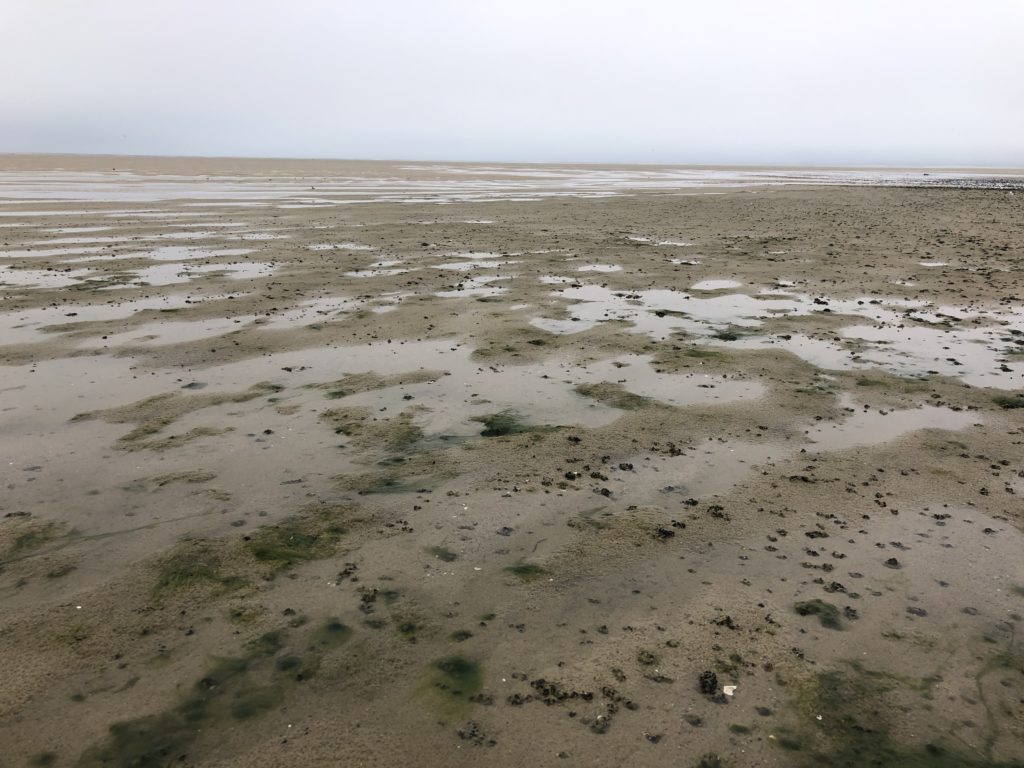
Monomoy National Wildlife Refuge and other areas of the Cape make up a network of essential stopover sites on Red Knots’ journeys, as the birds take the opportunity to rest and plump up on food sources found within Cape Cod’s mudflats and shallow coastal waters. Like all choice stopover sites preferred by Red Knots and other shorebirds, Monomoy contains an extensive network of intertidal flats and areas of higher ground where birds can rest when the tide comes in. The areas of the Atlantic coastline that meet this set of criteria are declining.
“For Red Knots, especially, Monomoy is a site of global importance,” says Kneidel, Manomet conservation biologist, who will lead the study’s fieldwork and sample collection. “The southern areas of Monomoy itself are [federally-designated] wilderness; it’s difficult to get out there and the amount of human impact on those sandbars is very minimal compared to other shoreline areas.”
Located off the coast of Chatham at the elbow of Cape Cod, Monomoy’s sandbars and mudflats are ceaselessly shaped by wind and waves, with sometimes striking topographic changes taking place from one year to the next. As a warming climate increases extreme weather events and shoreline erosion, those volatile dynamics could present a challenge to Red Knots and other shorebirds as their food sources and shelter areas become jeopardized.
Shifting landscapes on Cape Cod
In 1979, Manomet scientist emeritus Brian Harrington first documented the crucial role Monomoy plays in the Red Knot’s flight path. Then, in 1999, Monomoy was added to the Western Hemisphere Shorebird Reserve Network (WHSRN), an initiative that identifies and protects sites across North and South America of particular conservation significance to shorebird survival. (Today, WHSRN’s executive office is housed within Manomet’s Flyways team, and the network is made up of 113 sites and countless collaborators and partner organizations sprinkled across the Western Hemisphere.)
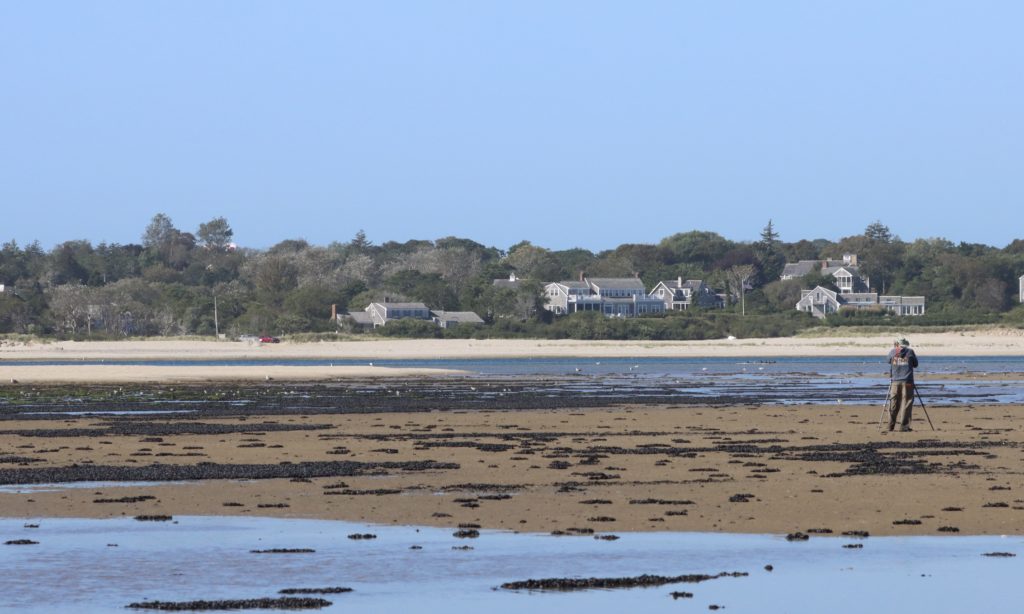
Shorebird sightings from Monomoy also feed into the International Shorebird Survey (ISS), a research effort developed in the mid-1970s by Harrington. Today, the ISS is one of the longest-standing community science efforts in the world, containing tens of thousands of shorebird data and observations from 21 countries and many decades of surveillance.
In recent years at Monomoy, Kneidel and other scientists have noticed that Red Knots now seem to be favoring resting and feeding grounds just slightly north of the wildlife refuge, within Cape Cod’s Pleasant Bay. In contrast to the remote outer reaches of Monomoy, Pleasant Bay is a much different environment—it’s full of boat traffic and its beaches are bustling with human activity.
“It’s an area with many more human-related implications for habitat management,” Kneidel says. “A lot of what could be causing the Red Knots to shift to Pleasant Bay is the changing waterflow in Monomoy, and seemingly-constant new breaches in its beaches and sandbars.”
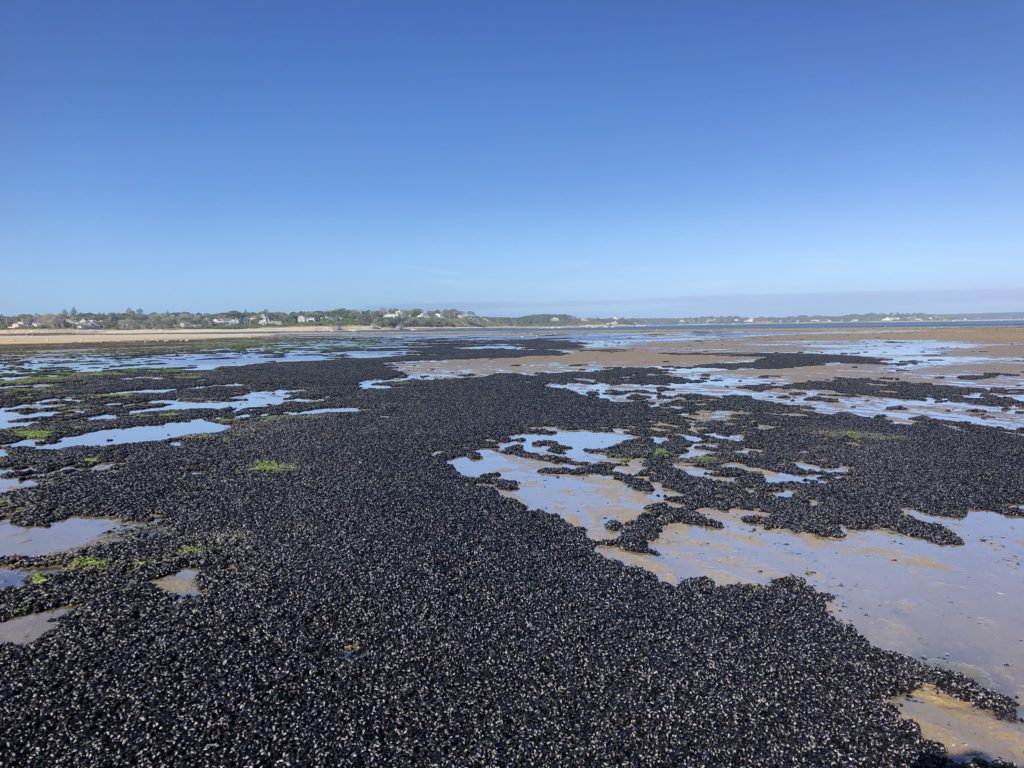
Those topographic shifts may be altering the concentration of mudflat-dwelling invertebrates, like marine worms and shellfish, and potentially drawing Red Knots into the heavily-trafficked Pleasant Bay area as they seek food.
Blooming interest in eDNA
The eDNA approach—using genetic sequencing to identify plant, animal, or another organism’s DNA from water or sediment samples—was first embraced by the Maine-based arm of the Manomet team, when Anne Hayden (former Manomet program manager) started collaborating with UMaine researcher Michael Kinnison. Along with collaborators at the Maine Center for Coastal Fisheries, they used the technique for measuring the abundance of river herring in Maine through a project called Maine-eDNA. Then, McMahan, Manomet’s director of fisheries, adopted the technique in partnership with Peter Countway of the Bigelow Laboratory of Ocean Sciences, analyzing quahog spawning.
“The Maine-eDNA project is a five-year-long project funded by the National Science Foundation,” says McMahan. The multi-institutional initiative employs genetic sequencing tools to improve environmental monitoring, ecological understanding, and sustainability of coastal ecosystems through research, education, and outreach. After Manomet’s Maine-based team started leveraging eDNA, other Manomet researchers began dreaming up more ways to use the technique.
In fall 2021, Kneidel and a small team conducted a pilot study, scouting out areas on Cape Cod between Monomoy and Pleasant Bay that attract the highest number of Red Knots. There, they practiced using core samplers–tubes that are twisted into the earth in a motion similar to skewering a beach umbrella pole into the sand–to extract layers of sand, mud, or water. They also observed Red Knots as they fed and strolled Monomoy’s sandbars, taking opportunities to scrape up samples of fresh bird poop into collection vials.
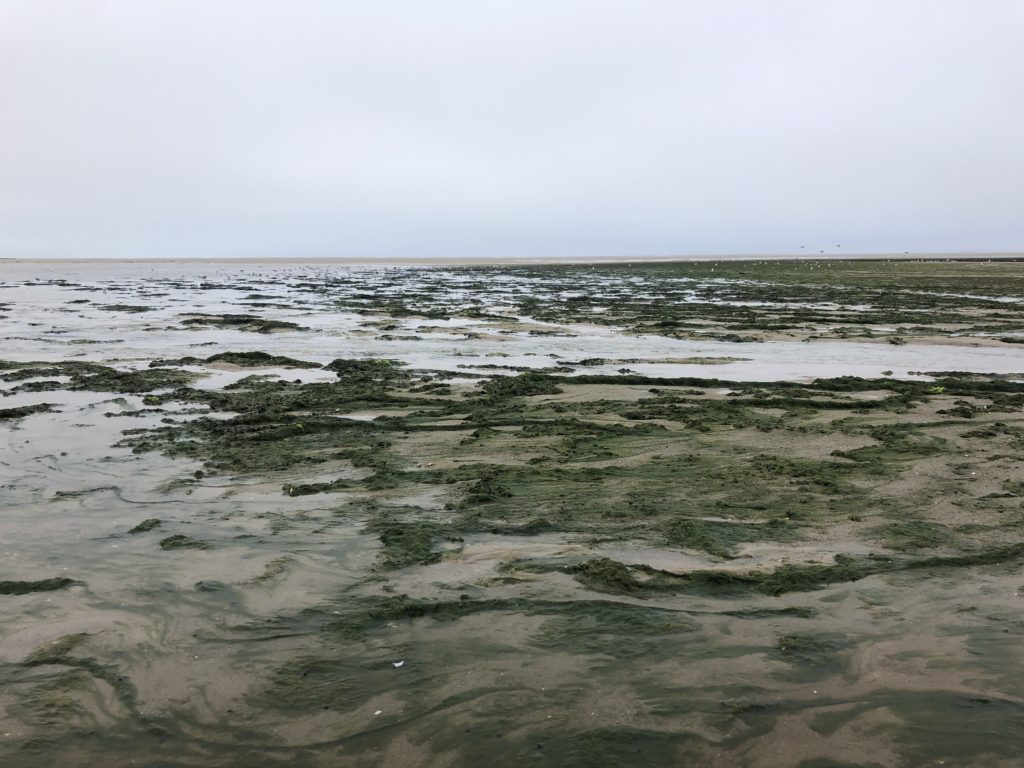
All of those samples are now on their way to UMaine, where Grey and her lab members will extract organic matter and perform DNA sequencing. The analysis will divulge the presence and abundance of potential food sources from sample sites across the mudflats, and provide insights into which food sources Red Knots have been eating the most of.
With the new USFWS grant, their initial pilot work on the Cape will pick up momentum rapidly. “The fieldwork of the 2021 pilot study was really successful, we were able to map out Red Knot feeding areas within the whole Monomoy-Pleasant Bay system and identify the feeding hot spots,” Kneidel says. “That groundwork will allow us to hit the ground running this spring.”
Impacting conservation efforts globally
Kneidel and the team are particularly interested in learning how Red Knots shift their diets over the course of the seasons as their food choices fluctuate. Two feeding hot spots from the fall 2021 pilot study contained mussel beds, where Red Knots made quick work of eating young mussels. But later that same season, the birds seemed to prefer feeding on sandy mudflats, digging their long bills into the sand in search of worms and other invertebrates.
The work not only stands to provide near-term insights for conservation of Red Knots and other shorebirds, but could also play a role in developing a protocol for using eDNA that can be applied around the world to study any species of interest, aiding conservation efforts for a variety of wildlife.
It may also provide a longer-range view of Cape Cod’s changing ecosystem. After Grey’s UMaine team performs the eDNA analysis, the samples from Monomoy and Pleasant Bay will be stored forever.
“In 10 years from now, if we decide we have something else we want to analyze in those samples, we can go back and look at them again,” McMahan says.
Manomet has also invested in an electronic reader that will allow researchers to detect the DNA signatures of species of interest in real-time, straight from the field. The device, known as a qPCR reader, is powered by the same technology that allows for the genetic signature of the COVID virus to be detected in tests.
“eDNA is game changing,” McMahan says. “I think one of the really cool things that could come from this down the line is the ability to expand the scope of community-based science. Anyone can use these tools, be it a researcher or a member of the community. And the results can be read anywhere. With the work that Manomet and WHSRN and our partners are doing all over the Western Hemisphere, the capability to screen any water or sediment sample for DNA from shorebird species or their food sources—this is going to shift the paradigm.”





 Back to all
Back to all